451 murder victims… and the hunt to find their killers: How Ukraine’s security service is hunting Russian troops who carried out one of the war’s earliest atrocities uncovered with the discovery of a shocking mass grave
It was clear to Vitaly that he had to start digging graves shortly after he heard that the Russian army entered his country last February.
Although he expected bloodshed and battle, nothing could prepare him for the brutality of Putin’s forces and their willingness to put aside their humanity for the sake of more Ukrainian territory.
The older man, who did not take on the role of city gravedigger lightly, said: “When there was no shelling, we dug and buried. When there was shelling, we got out.
“Cluster grenades, rocket launchers, all kinds of things, they were just shooting, knowing there was no one from the military in these buildings, they were just hitting the civilian population. Just a mass murder of people.’
Within just a few days of Russia’s illegal invasion of Ukraine, Vitaly’s city of Izium was overrun by Russian forces, who indiscriminately hit civilian targets.
Vitaly buried 451 bodies, almost all of them Ukrainian citizens, in a small forest outside the city. Many were found with signs of torture, and several were found with gunshot wounds.
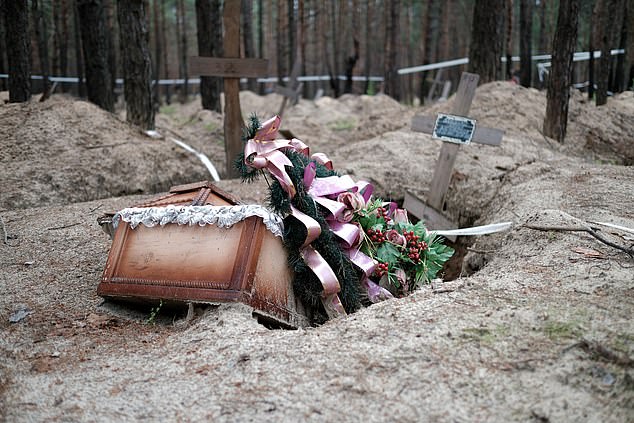
Russian forces fired indiscriminately at civilian targets as they captured Izium
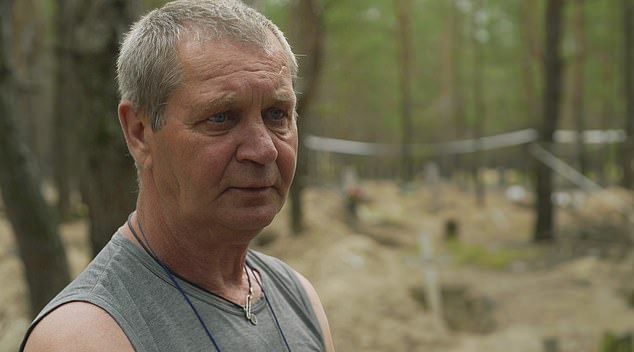
Vitaly helped bury 451 people, mostly Ukrainian citizens, in a forest near Izium
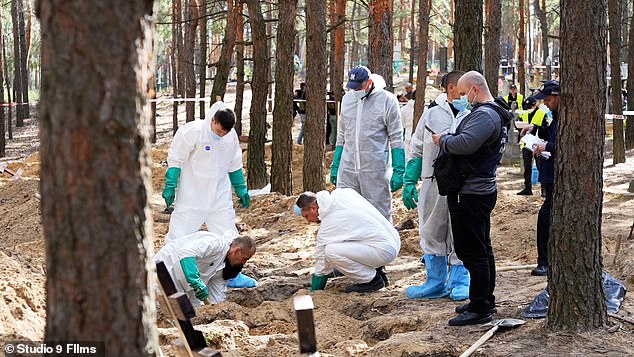
The bodies were exhumed last fall after Ukraine retook territory
But the speed at which the bodies piled up and the brutal way in which they were killed meant that many of them have yet to be identified.
“There were a lot of unknown people, there were a lot of unknown remains,” he said.
After Russian troops were expelled from the region last fall, investigators have been exhuming “50 to 60” bodies a day, and Ukrainian security forces are now hunting the Russian forces who committed the sickening war crimes in Izium.
An investigating officer said: “What the Russian army has done is against humanity, against Ukraine, against Ukrainians, and could be called genocide.”
The security service wants to shed light on what happened to civilians in the region.
Two service officials have been searching for relatives and possible DNA matches to those buried in the Izium Forest, in an effort to bring closure to the thousands in the city who lost loved ones, including Halyana Zhykhareva.
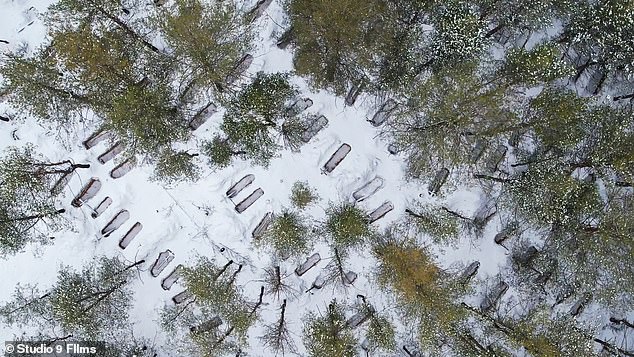
451 bodies were buried in a forest near Izium, northeastern Ukraine, after Russian troops occupied the region
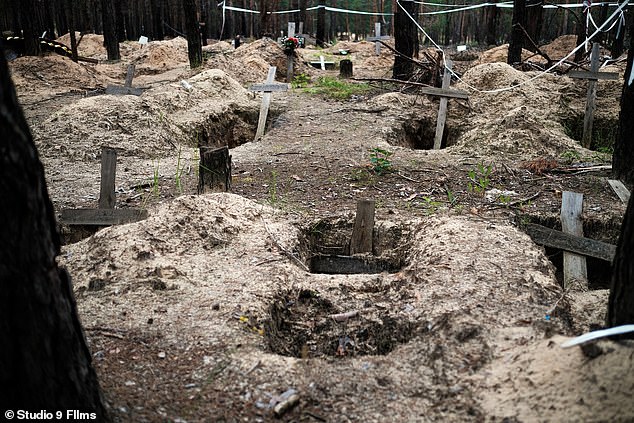
Many bodies were unidentified, leaving many in Izium unaware of what had happened to their loved ones
The great-grandmother lost several members of her family, including two young girls aged six and nine, when a 500kg bomb leveled the apartment building they lived in.
’52 people died. My whole family was there.” she said softly.
Their bodies lay in the rubble for months before they could be recovered and given makeshift burials, and only now has she been able to bury them with dignity.
The hunt for the perpetrators of the lengthy Izium massacre is documented in a new film, The Grave.
Allie Wharf, who produced and directed The Grave, said: “This war is unlike many others I have covered.
“In many cities far away from the front line, Ukrainians are trying to live ‘normal’ lives, to rebuild when things are destroyed, but the terror, the grief, the grief, the anger and the despair are just below the surface.
‘Witnessing the courage and professionalism of my young colleagues in Ukraine has been a special experience in my film career and to hear from them that filmmaking, working and reporting the suffering of their country has saved them from despair , is a testament to the strength of that business.”
The documentary, which will be shown on ITV1 on November 6 at 10.45pm, comes as 20 months of Russia’s invasion of Ukraine ticks by and hundreds of alleged war crimes have been documented.

The bodies of the inhabitants of Izium lay in the rubble for months before they could be recovered
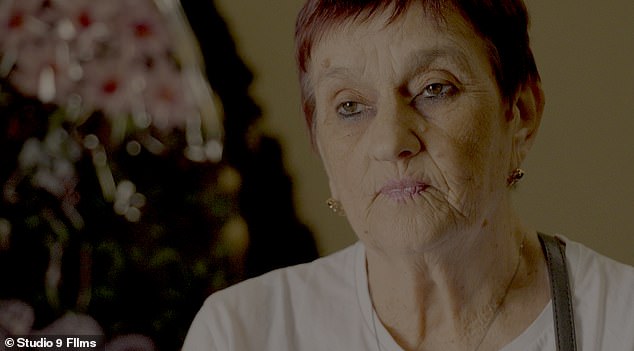
Halyana Zhykhareva (photo) lost several members of her family, including her great-granddaughters aged six and nine
Earlier this week, the BBC reported that nine people, including two young children, were shot dead in their home in the Russian-occupied city of Volnovakha.
Ukrainian officials believe Russian soldiers killed the entire Kapkanets family on Friday for failing to hand over their home.
Ukrainian Ombudsman Dmytro Lubinets said on Monday that “the bloody hands of the Russians were involved” in the Volnovacha killings.
“According to preliminary information, the occupiers killed the entire Kapkanets family, who were celebrating a birthday and refused to hand over their own house to occupiers from Chechnya,” he said in Telegram.
Both Russia and Ukraine are investigating the horrific incident.
The conflict, the bloodiest on European soil in decades, has injured and killed hundreds of thousands of soldiers on both sides.
The Wall Street Journal reported in August that up to 50,000 amputations had to be carried out on Ukrainian civilians and soldiers.
In contrast, 41,000 British soldiers had to be amputated throughout the First World War.
Doctors in Ukraine blamed Russia’s heavy use of landmines the country placed on its front lines, as well as its heavy use of artillery and rockets.
